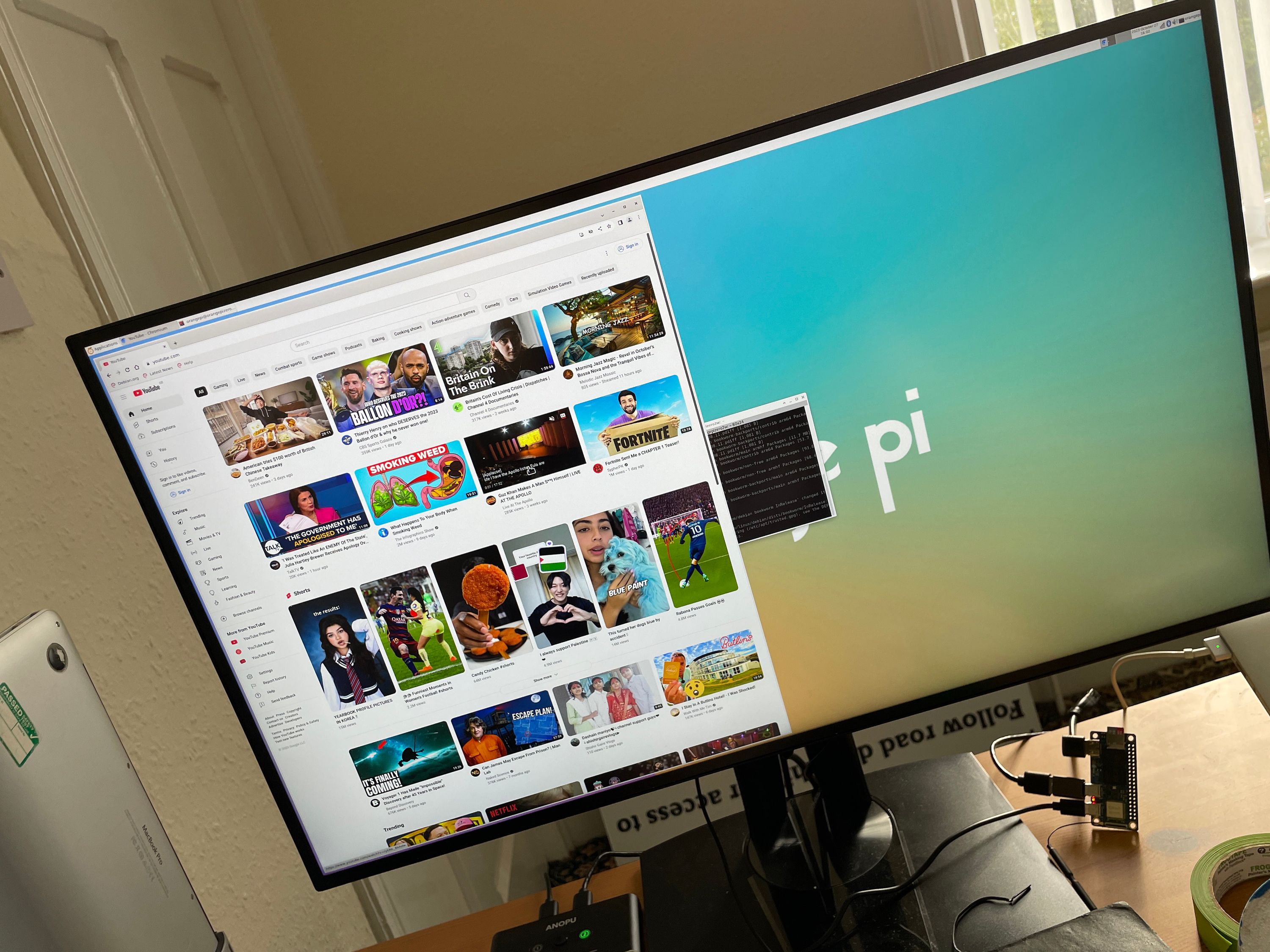 Praying for the Printer according to Dall-E
Praying for the Printer according to Dall-E
I was glad when they said unto me, “Your parcel from AliExpress has been delivered.” No customs hassle, no strange seeds, only a bubblewrap envelope! The OrangePi Zero arrived finally, and in due course the MiniHDMI and USBC adapter cables as well.
 Orange Pi Zero 2W
Orange Pi Zero 2W
Board powered up fine, and bang! OrangePi’s default OS! Ran nmtui from terminal to set up the WiFi, and in a matter of minutes I was browsing YouTube as a test.
The OrangePi Zero 2W’s performance was… acceptable. It’s an SBC, after all, I did not expect miracles from it; and I did give it a heavier task in YouTube. There was, of course, some stuttering. But I was not going to use it for any such purposes, for a CUPS server this was total overkill.
 OrangePi OS! Yay!
OrangePi OS! Yay!
So I went distro hunting. Armbian would have been my first choice, but it seemed that this particular board is not supported, or at least, it was not in illo tempore. 1
So Armbian was out, but there is an official Debian image, both for Bookworm and Bullseye. I downloaded the appropriate image from OrangePi’s official Google Drive folder (!), unpacked, found a spare MicroSD card at home, ran BalenaEtcher, and off we went!
Now it needed the parish office’s Wifi to be pre-configured; this was acquired from the back of the router. 2 CUPS was acquired via apt-get, configured to listen to LAN and localhost in cupsd.conf, and then I enabled ssh. Tested with the home WiFi again, double-checked the password for the office router, got in the car, and full of excitement, went about to headless-deployificate the Zero2W.
Headless deployment, however, as John Maximilan has forewarned when chatting on Signal, is a nightmare. And it is. Truly. Once I arrived, nothing wanted to work of course, and I was so confident in myself that I forgot to leave myself with a way in outside of ssh. But if the board cannot connect to the WiFi, which seemed to be the main problem, I had no way of actually testing further. One workaround, in hindsight, would have been to either bring an USB to Ethernet adapter to plug in directly with the laptop, or, as John Maximilian also suggested, to add my phone’s Personal Hotspot as a fallback WiFi network. Another, which I am just thinking of now, would have been to create a script that, after, say, 10 unsuccessful connection attempts starts up an Access Point. Most of these tiny boards can operate in WiFi AP mode, after all.
So back in the car I went, with some lessons learned the hard way, connected to the board at home, enabled my phone’s AP as fallback… And so on.
Round 2 of deployment came in another week’s time, when I had time again to tinker on a Monday afternoon.
WiFi connection failed again, but this time I could at least ssh back in via my phone AP. Running nmtui I noticed that the problem was a signal issue: it did spot the Parish network, but the tiny board’s tiny antenna was too tiny to pick up the standard domestic router which is two rooms over without any signal boosters. Generally this router produces an unexpected range: one can even pick up a faint signal in church, but as I said, tiny antenna was tiny. Or so it seemed to seem.
So back onto eBay I went and after I figured out what on earth they call these tiny connectors on the board that I could push the supplied external WiFi antenna on to, 3 and I ordered some external, higher gain antennas. (Antennæ?) And there was more waiting around.
Once, after an entirely reasonable amount of waiting for a package that was supposed to have shipped from the UK but was in fact drop-shipped from China (liars!), I went back a third time to do some tests. Something Biblical about going back a third time.
And lo and behold, the antenna did not fit. On further inspection, and in hindsight, I can see why: it came with a male connector instead of female—I clearly did not pay enough attention to the item description on eBay, but never should the two be confused. The spare parts will hopefully come handy in another project later. (This is a slippery slope to hoarding).
But I did notice that there was a tiny problem with the male connector on the board: it was ever so slightly bent. I managed to bend it back into an entirely factory-quality fit, and having applied decisive force with controlled aggression when re-applying the antenna (that is, I pushed harder), it clicked into place much more reassuringly than before.
One Hail Mary later I plugged the board back in, connected the Konica Minolta C203’s USB cable, ran nmtui again on the OrangePi, re-scanned for WiFi, and could breathe a yuge sigh of relief as the WiFi seemed to connect, the manually assigned fixed IP worked, ssh worked, cupsd was running, and I could access the web interface on the standard port, 631. And again and again, there was much rejoicing.
I just needed to print a test page.
For the time being I just selected “Generic PCL” as the printer driver, and …
 An actual CUPS test page printed over WiFi
An actual CUPS test page printed over WiFi
Joy ever increased. But that it may be fuller and deeper, I wanted to find a more innovativer way to power the board than simply plugging it into the wall socket: there was no reason why it should be on when the printer isn’t, or vice versa. So the ideal would have been to power it through the printer somehow. And the final job was to hunt down the appropriate PCL driver, because, while, as previously indicated, with the generic PCL driver we could print something, it was obvious from the test page that colour printing was not yet possible. Which would have been the whole point of this adventure. To have all the missing features enabled, such as paper source selection or duplex and colour printing, I needed the appropriate drivers.
But these are for next time.
I find this odd, personally. Given the popularity of the RaspberryPi Zero and its variants, one would think that the form-factor would appeal to the general populus more. But this does not seem to be the case; Armbian has a great list of Community-supported boards, among them many things from OrangePi, but not this one.↩︎
I know. Not my call, I don’t live there, it’s the Parish Priest’s house.↩︎
For those wondering: it’s was an U.FL antenna with a female connector that I needed↩︎